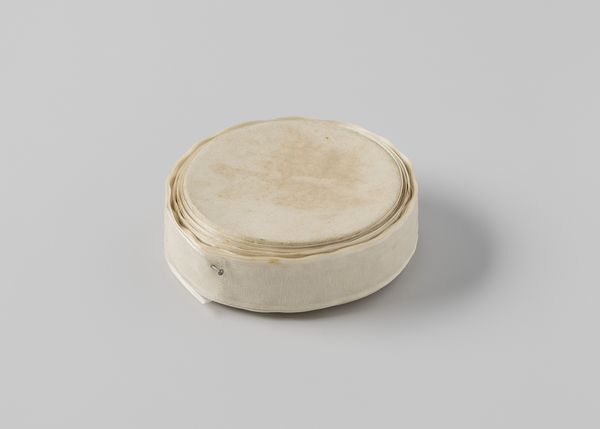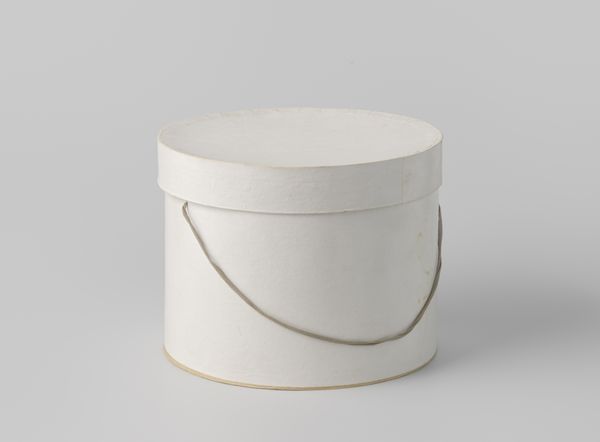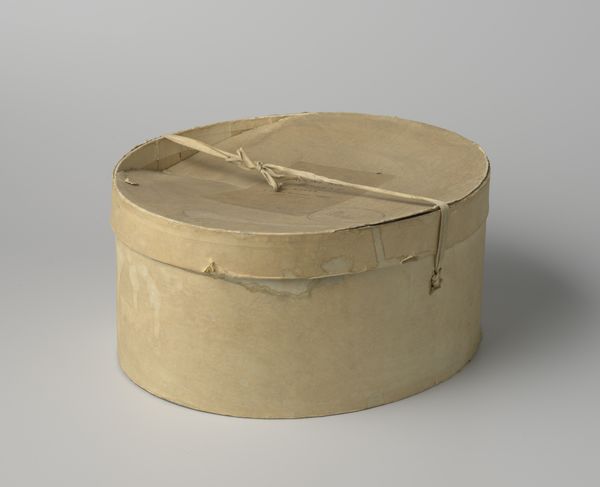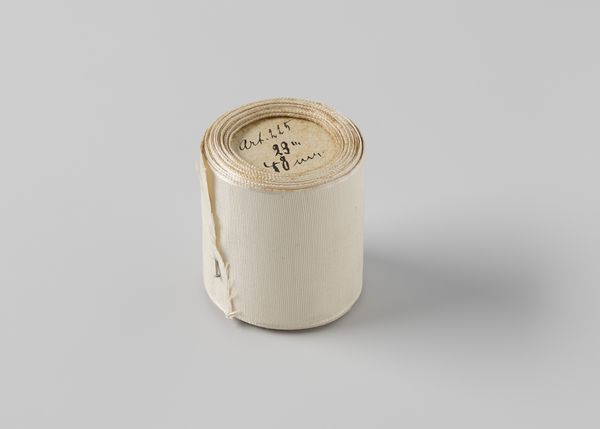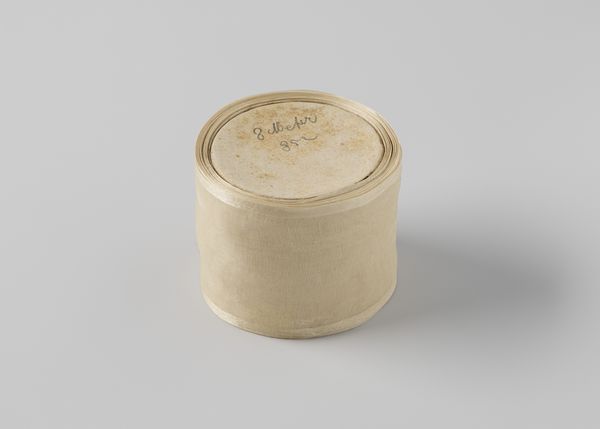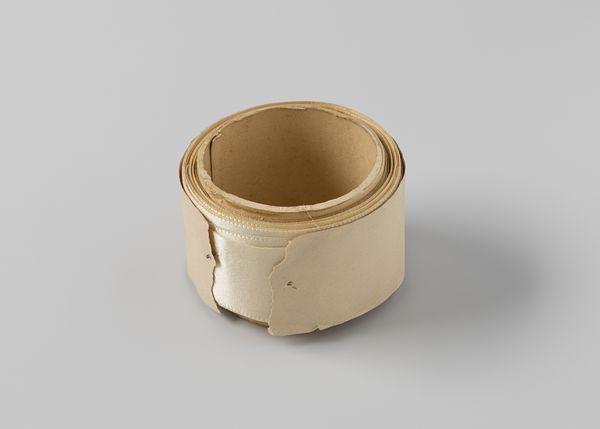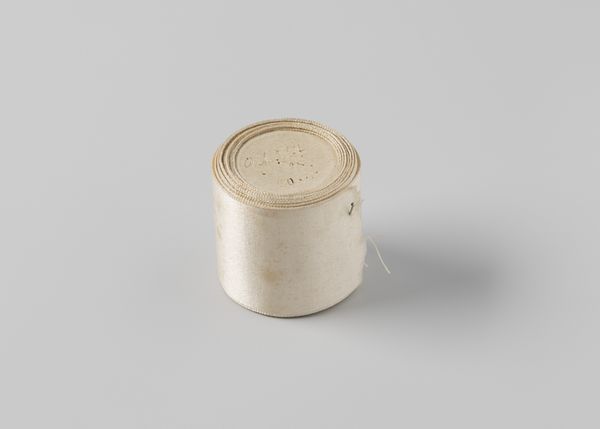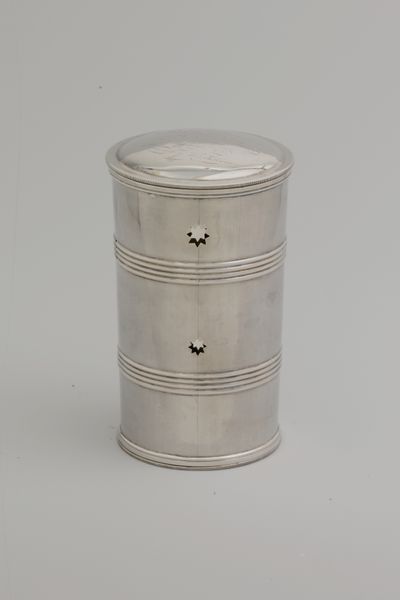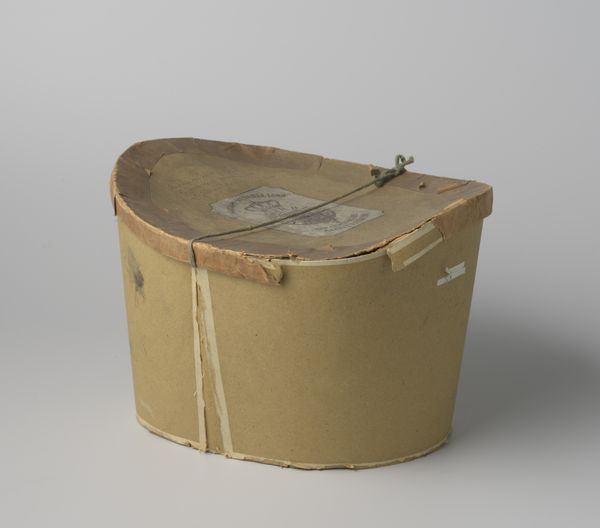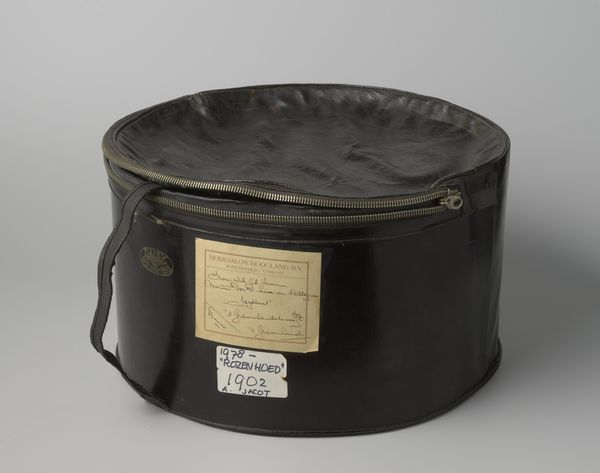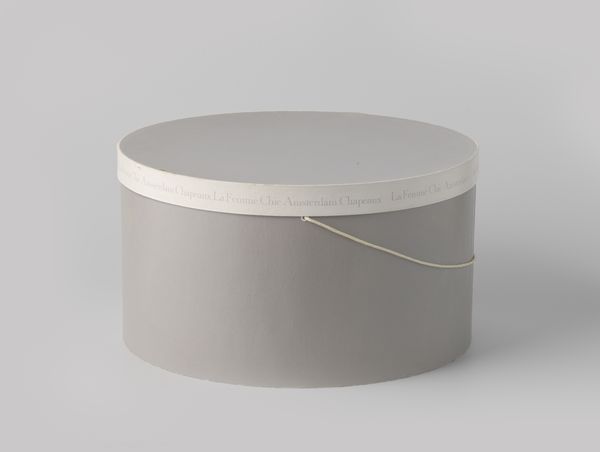
Ovale hoedendoos van karton, beplakt met lichtgrijs of lichtblauw papier dat op de deksel is afgezet met een bruine bies after 1942
0:00
0:00
photography
#
old-fashioned
#
photography
#
product photography
#
decorative-art
Dimensions: height 24 cm, length 32.5 cm, width 28.5 cm
Copyright: Rijks Museum: Open Domain
Curator: Here we have an image titled "Ovale hoedendoos van karton, beplakt met lichtgrijs of lichtblauw papier dat op de deksel is afgezet met een bruine bies," which translates to "Oval hat box made of cardboard, covered with light gray or light blue paper, which is decorated with a brown border on the lid". It's dated sometime after 1942. What's your first take? Editor: Immediately, a sense of postwar austerity comes to mind. The color palette is very subdued; it gives off a rather muted and quiet vibe. Almost melancholy. Curator: Considering the era, that somber feel makes sense. Hat boxes themselves became markers of social standing and evolving fashion trends, especially for women. A new hat signified, perhaps, an optimism toward the future during a time of rebuilding. How might we look at the materiality here? Editor: The description details the box being made of cardboard and covered in paper, suggesting a mass-produced object, not exactly luxury, yet striving for elegance. The means of production signal accessibility, contrasting with the relative opulence hats could represent. It is intriguing how this contrasts with the current trends around packaging materials. Curator: Precisely! Post-war, the changing status of women in the workforce also comes to bear, since hats themselves shifted in prominence. Women are seen in new professions, leaving behind certain societal constraints while still navigating older expectations around formal appearance. How might the materiality emphasize such new intersections of personal and political power? Editor: Well, looking at how the box, though simple, is trying to package what it protects is an expression of personal branding. You might say this paper and cardboard box speaks of accessible beauty during hardship. It speaks of the new material circumstances with an implicit touch of design. It is interesting to see its symbolic significance in light of these production constraints. Curator: This is so interesting; it helps see this picture of an old object not only as something of material value, but also loaded with historical relevance to better contextualize it as a gendered object. Editor: Absolutely, considering both the labor involved and the item it once carried allows us to deepen our understanding of design and cultural changes over time.
Comments
No comments
Be the first to comment and join the conversation on the ultimate creative platform.
